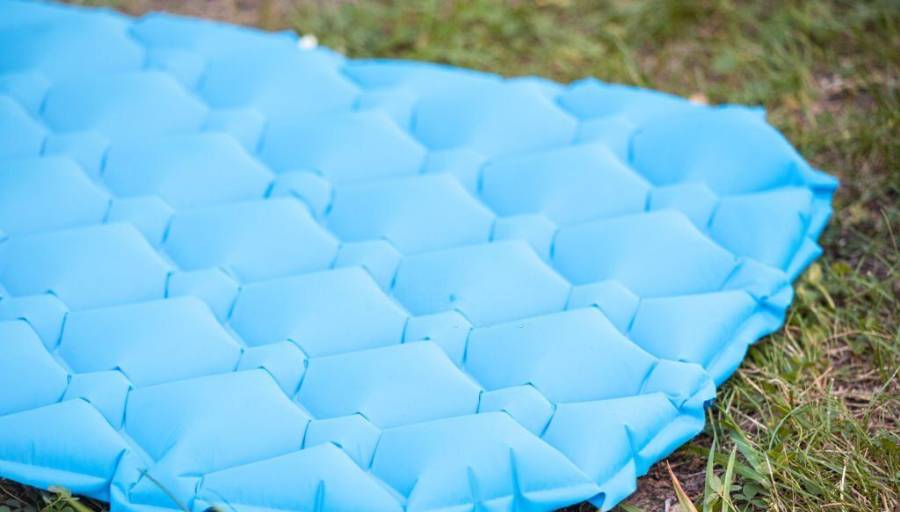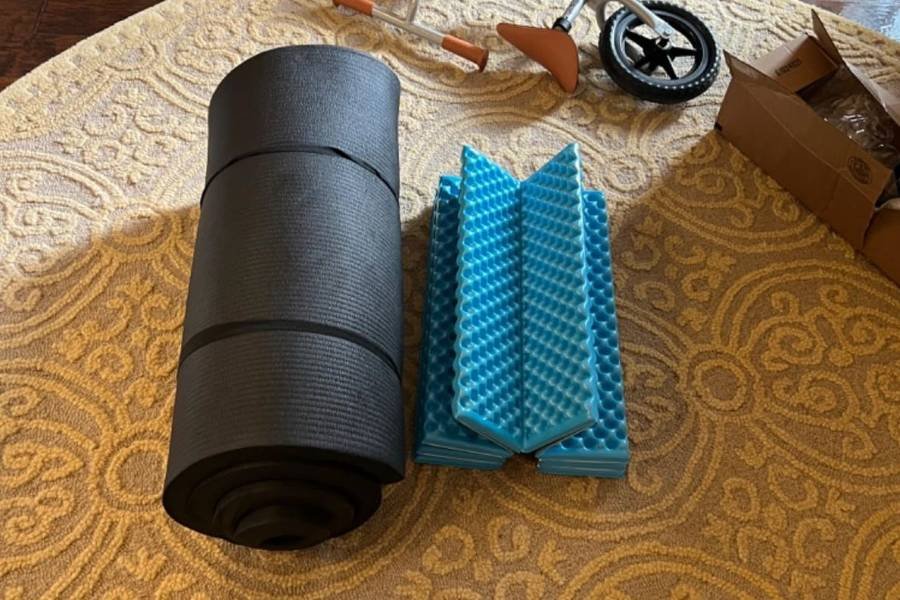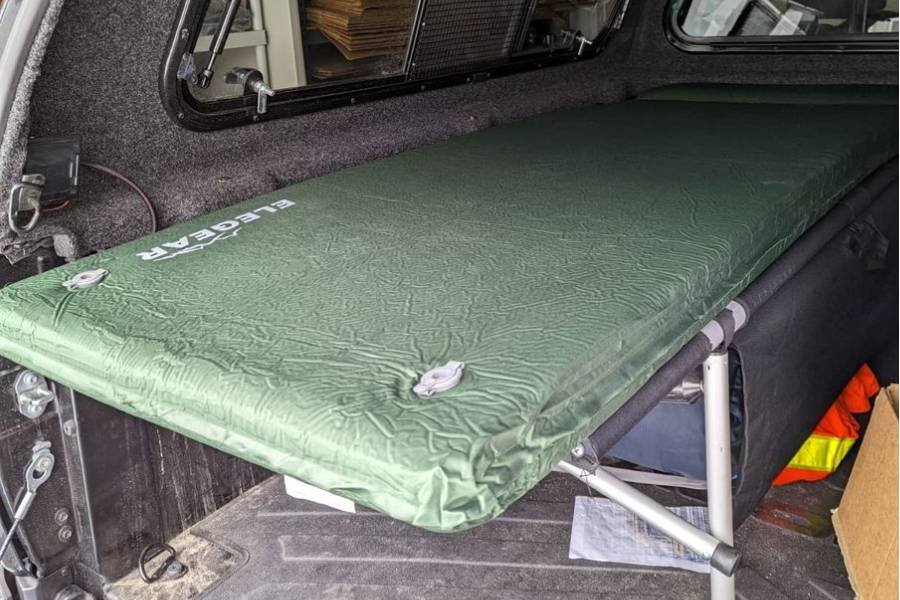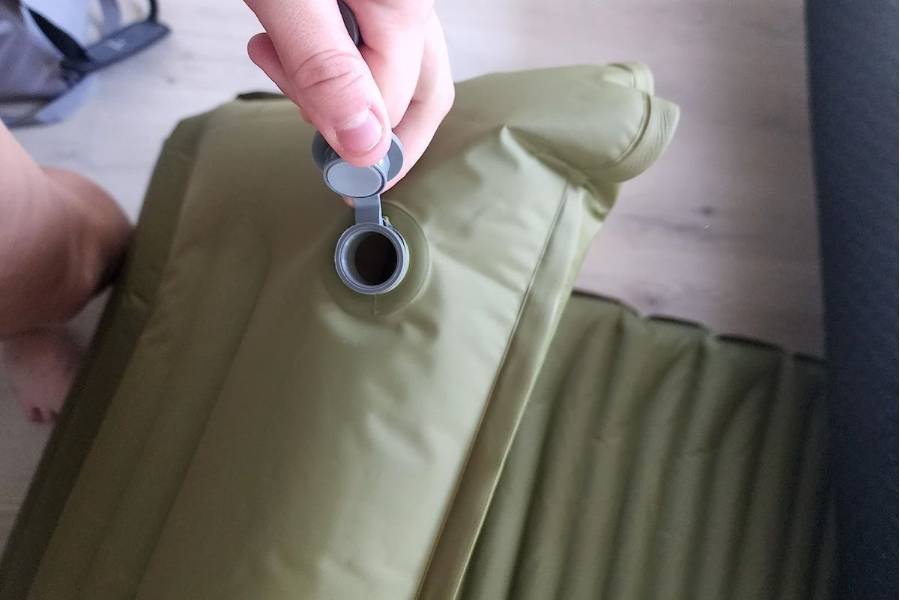
Recovering from the day’s exertions and ensuring optimal preparation for the challenges of an upcoming long-distance hike are most important. A restful night indoors plays a crucial role in this preparation, and selecting the right sleeping pad is key to achieving both comfort and insulation.
This article serves as a guide to help you navigate the intricacies of choosing a hiking mattress, empowering you to wake up revitalized and ready for the adventures that lie ahead.
What is a Sleeping Mattress Used for When Hiking?
It is often thought that having a good sleeping bag ensures a good night in the mountains. It’s actually not right. To spend an excellent night, you need a good sleeping bag BUT also a good mattress that will ensure comfort and above all insulation. Before learning how to choose a hiking mattress, let’s see what is a sleeping pad used for when hiking.
- Comfort: The primary function of a sleeping mattress is to offer comfort. Beyond accommodating the uneven terrain, such as rocks and holes, a well-chosen mattress ensures that you can sleep comfortably in various positions and promotes a more restorative rest.
- Insulation: A sleeping mattress acts as a crucial insulating barrier. This protects you from the cold ground and prevents direct contact. Similar to layers of clothing, these pads trap a layer of air between your body and the chilly ground. This trapped air forms a thermal barrier, effectively insulating you from the external cold and enhancing the warmth retained during the night.
Different Types of Sleeping Pads
Exploring the various types of sleeping pads available for hiking is crucial in finding the one that best suits your needs and preferences. There are several types of sleeping pads, each with its own set of features and advantages. Let’s see the main categories:
1. Foam Mattress

These basic hiking mats feature dense foam filled with tiny closed-air cells. It is the ancestor of floor mattresses but it still has many advantages. This type of mattress can be folded or rolled depending on the model. This mattress is good for small budgets: little comfort and large size. Its main weaknesses are the size and the lack of comfort offered. On the other hand, for small budgets or occasional use, it is the best solution.
Advantages:
- Lightweight
- Low price
- Very resistant
- Versatile
- Correct insulation
Disadvantages:
- Very uncomfortable (the position “lying on the side” is difficult.)
- Bulky when rolled up
2. Self-Inflating Mattress

Self inflating mattresses combine insulating foam and valves that fill with air automatically by opening the valve. You will only have to finish the inflation by mouth to obtain more or less firmness. In general, these mattresses are thin (between 2 and 4 cm) and therefore provide less comfort compared to inflatable mattresses (often between 5 and 8 cm).
The part against the ground is strong enough to withstand the vagaries of the terrain. For the part in contact with your body, choose a mattress with a pleasant to the touch envelope and avoid smooth envelopes. Because there is nothing more unpleasant than having the feeling of slipping on your mattress all night.
Advantages:
- Comfortable
- Excellent insulation
- Simple to setup
- Easy to carry
Disadvantages:
- A bit bulky
- Heavier weight than an inflatable mattress
- Quite flimsy
3. Inflatable Hiking Mattress

These mattresses are therefore inflated directly with the mouth. And yes, if you are hiking you will have to keep a little breath to inflate your mattress at night.
Long reserved for traditional camping, these mattresses are currently making their mark on the outdoor market thanks to light to ultra-light products, you can find this type of mattress less than 400 grams. They are beginning to supplant self-inflating mattresses, as they are lighter, much less bulky, and significantly more comfortable. Some models also go very far in terms of insulation with synthetic micro-fiber or even down fillings.
These mattresses are quite thick between 5 and 10 cm and provide you with excellent comfort including lying on your side position. In terms of weight, the lighter the mattress, the more expensive it will be. However, the main disadvantage of these mattresses is their fragility. All it takes is a thorn to make your mattress unusable.
Advantages:
- Very comfortable
- Space-saving and easily into the backpack
- Very light for the most expensive models
- Insulating especially the most expensive models
Disadvantages:
- Brittle
- High price
Choose a Floor Mattress Adapted to Your Use
Selecting the right hiking mattress can indeed be a challenging task, and the decision is inherently tied to the intended use.
Hikes Without Carrying
Choose comfort with a fairly thick self-inflating mattress. Don’t go on the lightest models and therefore the most expensive, because the weight criterion is secondary in this type of hike.
Occasional Hikers
Inflatable or self-inflating mattresses are quite expensive even very expensive. For occasional or infrequent practice, a basic foam mattress will do better. Your nights will be a little more difficult but that’s also the joy of nights in the mountains.
Regular Hikers/Star Hikes
You are looking for a compromise between size and comfort. Opt for an inflatable model or a self-inflating model. The prices are higher than a traditional foam mattress, but the investment is really worth it. Your nights will be better in terms of comfort.
Long-Distance and Ultra-Light Hikes
You are looking for the lightest possible mattress. Three options are possible:
- A basic foam mattress
- A very light inflatable model
- A self-inflating 3/4 size model to gain even more weight and volume
Winter Hikes and Expeditions
Winter hiking requires more insulation. Then the ideal solution is to have first foam protection on which we add an inflatable mattress. Or choose the latest generation of inflatable mattresses with a high insulation index. However, the price is significantly higher.
Thickness, Width, Length, and Inflation
Due to the variety of hiking mattresses, you have to check these features before buying:
- The thickness of a mattress plays a significant role in ensuring comfort during outdoor activities. For individuals with a lighter build, a mattress thickness of 2-3 cm may suffice to provide adequate cushioning and support.
- Regarding width, the mattress should be wide enough to accommodate your body without the shoulders and pelvis protruding from the sides. This ensures that your entire body remains supported and insulated from the ground.
- When it comes to length, opting for a mattress that is a little longer than your height can prevent your feet from hanging off the end. Some hikers also prefer 3/4 length mattresses, which cover the torso and legs but are shorter than a standard full-length mattress.
- Inflating and deflating your mattress should be a straightforward process, considering the practicalities of outdoor use. Many modern mattresses come with convenient inflation and deflation systems. For air mattresses, integrated or external pumps, as well as self-inflating options, are common.
Also, look in detail at the “R-value”: the higher the value, the more the mattress will insulate you from the ground. The R values are indicated on the technical data sheets of the products. They range from 1.0 for poor insulation to 9.5 for very good insulation.
In summary
Individual sensitivity and the specific conditions of your hikes should guide your choice of mattress insulation. If you hike 9 out of 10 times in the summer, it may not be necessary to choose a mattress with an R-value of 6. For the rare times, you need a mattress for the winter, it may be possible to borrow from your friends, or even rent.
After choosing your R-value, everyone should prioritize this or that criterion next. Some ultra-light walkers will choose a compact and light hiking mattress while others will emphasize comfort with a thick layer or easy inflation. When choosing, read the descriptions attached to the products, especially if you buy from an online store.
Frequently Asked Questions
How important is weight when choosing a hiking mattress?
Weight is crucial, especially for long hikes. Opt for a lightweight mattress without compromising on comfort and insulation. Consider ultralight options if weight is a top priority.
What’s the difference between air and self-inflating mattresses?
Air mattresses require external inflation tools and offer customizable firmness. Self-inflating mattresses combine foam & air. This provides a balance between comfort and convenience.
Are foam mattresses suitable for all seasons?
Foam mattresses are generally suitable for all seasons but may lack the insulation needed for extreme cold. Consider the mattress’s R-value to determine its insulation capabilities.
Is a pump necessary for inflating air mattresses?
It depends on the type of air mattress. Some require external pumps, while others have built-in inflation systems.
Read Also: